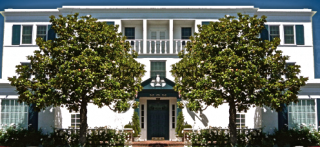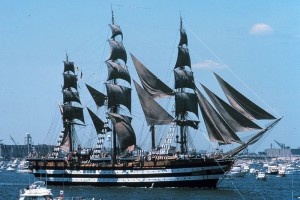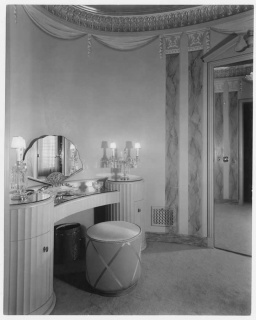Education | Timeline |
- 1829
- 1834
- 1840s
- 1848
- 1853
- 1859
- 1870
- 1870s
- 1871
- 1875
- 1877
- 1879
- 1880s
- 1882
- 1883
- 1884
- 1886
- 1887
- 1889
- 1890s
- 1891
- 1892
- 1893
- 1894
- 1895
- 1898
- 1899
- 1900
- 1900s
- 1901
- 1902
- 1904
- 1905
- 1906
- 1908
- 1909
- 1910
- 1910s
- 1911
- 1912
- 1913
- 1914
- 1915
- 1916
- 1917
- 1918
- 1919
- 1920
- 1920s
- 1921
- 1922
- 1923
- 1924
- 1925
- 1926
- 1927
- 1928
- 1929
- 1930s
- 1930
- 1931
- 1933
- 1934
- 1935
- 1936
- 1937
- 1938
- 1939
- 1940s
- 1940
- 1941
- 1942
- 1943
- 1944
- 1945
- 1946
- 1947
- 1948
- 1949
- 1950s
- 1950
- 1951
- 1952
- 1953
- 1954
- 1955
- 1956
- 1957
- 1958
- 1959
- 1960s
- 1960
- 1961
- 1962
- 1963
- 1964
- 1965
- 1966
- 1967
- 1968
- 1969
- 1970s
- 1970
- 1971
- 1972
- 1973
- 1974
- 1976
- 1979
- 1980
- 1992
The Family Keeps Changing, But The Design Remains
Los Angeles Herald Examiner (California Living), April 11, 1976
"One of the last projects which architect Paul Williams F.A.I.A gave personal attention before his retirement—an elegant colonial house on USC's sorority row— was also a first for the famed Los Angeles architect. He had never designed a sorority house. He said he wanted to 'design the most beautiful sorority house in America.' "
The sorority house is seen in this contemporary photograph.
Operation Sail: Ships From 20 Nations to Join in Bicentennial Event
Gadsden Times, December 13, 1975
" 'I don't think you'll see anything of this magnitude again,' said Harry Lynch, who heads the Boston end of the operation. 'It will be the greatest armada of sailing ships ever seen in this hemisphere. There is no doubt about it being the biggest spectacle of 1976.' "
Maynard L Parker, architectural photographer, dies
Maynard L. Parker's photographs are a visual record of 20th century California life-style. In the 1920s Parker works for Mott Studios, the company that sets the standards for modern architectural photography. Using floodlights and stage-like settings for each room, his pictures of the homes and haunts of movie stars and the affluent help craft their glamorous images for the curious public. An example of this technique is seen in this Mott photograph of the Jay Paley residence.
In the 1930s Parker works as an independent photographer and his many commissions chronicle the design work of important California architects including Paul R. Williams and Cliff May. His images of a May design on the cover of Sunset (1946) help usher in the age of the California ranch house—a style that sweeps the country.
Parker works with editors of every major design magazine in America but his relationship with Elizabeth Gordon, the powerful editor of House Beautiful (1941) is important for his career. His photographs of the homes of the powerful and famous are important elements Gordon uses to promote her aesthetic message. The Parker images illustrate her advocacy of the American life-style, American design and the education of an emerging middle class American consumer. His association with Gordon and House Beautiful continues through the 1960s.
Maynard Parker photographs scores of Williams' homes and hundreds of these photos are recycled in design and building trades magazines or as illustrations in decorating books. His images of the Jay Paley residence are widely published and are important in crafting the mystique of both the house and its swimming pool. (The Zodiac Pool is often listed as one of the most beautiful ever built in the U.S.) Parker's use of dramatic lighting, curated room settings and wide-angle lens creates the chic understated "look" often associated with Paul R. Williams.
Maynard L. Parker dies in 1976 and his work is quickly forgotten. Parker's reputation is revived and his artistry rediscovered in 2012 with the cataloging and digitizing of his photographs housed at the Huntington Library and the publication of Jennifer A. Watts' book—Maynard L. Parker: Modern Photography and the American Dream. Thousands of Mott Studio photographs, including Parker's, are now digitized and are available through the California State Library's web site. Many of his photographs of Paul R. Williams' designs are included in the collections at both libraries.









American Revolution Bicentennial
The United States commemorates the 200th anniversary of the signing of the Declaration of Independence with a year-long celebration. All 50 states develop a variety of activities to commemorate the Declaration but the Freedom Train and Operation Sail are national in scope. The Freedom Train tours the 48 contiguous states and contains historic artifacts rarely seen outside of museums. During Operation Sail, 16 antique, square rigged sailing ships from around the world, along with hundreds of smaller vessels converge on New York Harbor on July 4. Six days later the flotilla enters Boston Harbor led by the USS Constitution, under tow. The entry of the tall ships into New York Harbor is broadcast around the world by the major television networks.
Hundreds of "sanctioned" and unofficial patriotic festivals and observances take place across the United States during the celebration year. The Bicentennial is a respite from the national trauma of the 1970s.